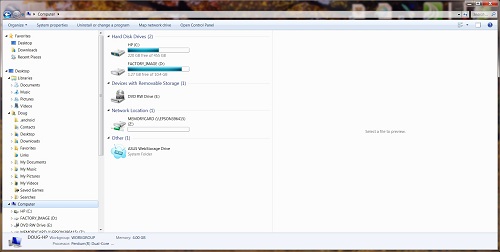

Windows Explorer Program

 |
|

Windows Explorer Program |

|
|
The Windows Explorer Program
The Windows Explorer Program is included in every version of the Windows operating system. It is not to be confused with
the Internet Explorer Program which is also included with Windows. Windows Explorer is used to see what is stored on your computer's storage disks and manipulate this data.
 Your computer stores data on disks. These disks are typically labelled with a letter. For example, the main storage disk on a Windows computer is normally labelled as disk C:\. Some disks are not disks at all but act just as if they were. Memory sticks or flash drives are such devices. They store data but can be removed and plugged into a computer with ease so are a very portable way of storing data. Data is stored in your computer on disks as files. These files are stored in folders in these disks. Each file has a name and an extension. For example, a picture might be stored in a file called mypicture.jpg where mypicture is its name while .jpg is its extension. The extension typically indicates how the data is stored in the file (viz, its format). For example, pictures are stored in files with such formats as .gif, .jpg, .tif, .bmp and so forth. Documents are stored in files with such formats as .doc, .txt, .pdf. Music and sounds are stored in files with such formats as .wav, .mp3, .wma. Executable programs or apps are stored in file with such formats as .exe. The Windows Explorer Program lets one search disks to look for disks, folders and files; in many cases display the contents of a file; delete a file or rename it; move a file from one folder to another; create a new folder; delete a folder; and so forth. These are very useful functions and should be learned by anyone using a computer. The following provide help in learning how to use Windows Explorer. |
|
|
© 2014 Penticton Seniors Computer Club